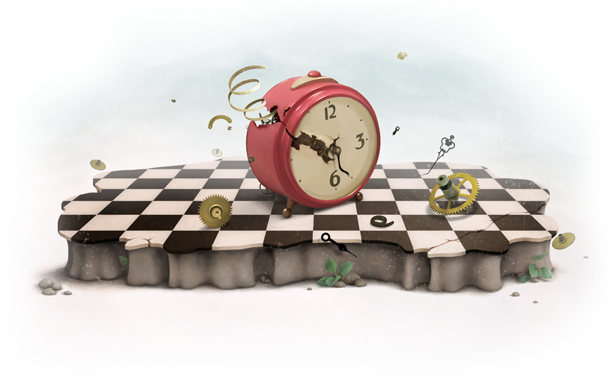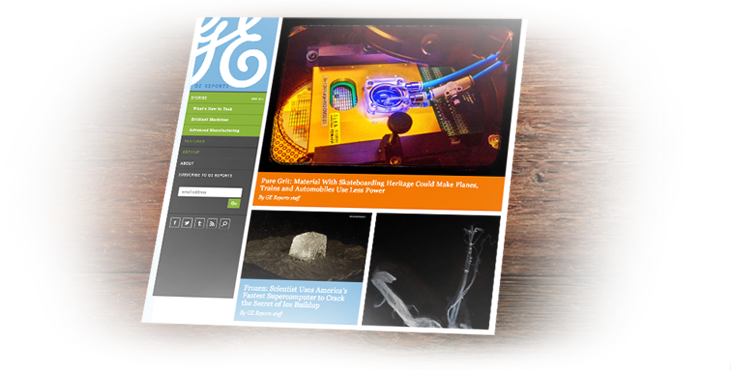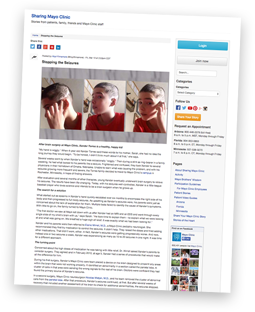
You walk as quickly as possible (there’s no running indoors!) and plop down cross-legged on the brown carpet. You know you are about to be transported somewhere new: outer space, a pirate ship... maybe a magical forest. As the pages turn, you forget you’re in a classroom. You lose yourself in the story you’re listening to—all of the sudden, you’re discovering new planets, winning sword fights and swinging from vines.
How great does that sound?
It’s no wonder we loved story time back then.
Even as adults, we’re captivated by the power of a good story. That’s a valuable piece of information for marketers who happen to be in the business of capturing buyers’ attention.
Storytelling is a powerful yet immensely underutilized marketing tactic. Take The LEGO Movie, which Marcus Sheridan calls “the most effective 90-minute commercial for a ‘toy’ we’ve ever seen.”


Storytelling is most effective when it’s part of a campaign that uses lead nurturing and marketing automation tools to generate qualified leads. Think of lead generation and marketing automation campaigns as three-act narratives that move your story—and your leads—forward.
If you fail to captivate your audience at any point, you could lose their attention forever. When there’s that much at stake, how do you make sure you’ve got something that’ll woo leads from “once upon a time” to “happily ever after”?
Your hero should inspire your target buyer, but here’s the secret: the “hero” is your customer. As the Copyblogger points out, “The hero of the story is the one who is transformed as the story progresses, from an ordinary person into someone extraordinary,”—all thanks to your product or service, of course.
The task of storytelling may seem overwhelming since marketers don’t traditionally focus their efforts on narrative writing. But there are steps you can take to increase your chances of success.

If you want potential customers to remember you, don’t push products. It’s a proven fact the human brain gives special resonance to emotional memories; use this information to your advantage. Stories are universal and can bridge the divide, which is why storytelling works so well at the top of funnel as a lead generating tool. Tell readers a story that makes them want to offer up their contact information.
Emotion doesn’t have to mean sympathy or guilt. You can do a lot with positive emotions like enjoyment and pride, or even inspiration. General Electric publishes the wildly successful GE Reports, which produces about 10 stories a week, with a broad audience stretching from investors to geeks and technology enthusiasts. “When you tell a story and tell it right,” says Managing Editor Tomas Kellner, “people will start paying attention.”

Pricing strategy consultants INSIGHT2PROFIT used a quasi-fictional approach for the eBook, “Why Bad Pricing Happens to Good Companies.” The eBook, which uses details from interviews with real-life clients, takes the form of a fictional case study about Gordon McGrath, the new CFO of imaginary company, Luxentra. As readers dive deeper into the story, they follow Gordon as he navigates multiple pricing challenges, implements best practices and, ultimately, emerges as his company’s pricing hero.
This approach—assembling recognizable details into a coherent, amusing narrative—offers even the most scrutinizing audience member an authentic, useful and entertaining reading experience.
in 2014. The storytelling aspect is rooted in human interest, with visionary inventors, iconic designers and healthcare advocates sharing how they help “drive the world forward.”
This engaging content doesn’t mention horsepower, torque or anything vehicle-related. It simply resonates with the brand’s target audience, and effectively builds and strengthens loyal relationships over time.

Once again, storytelling is a great opportunity to start building relationships with your new leads. Start by sending a series of emails that offer additional educational content for their specified issues. These emails will provide the exposition needed to introduce your solution—even if the leads aren’t ready to become customers just yet. Use stories to tie your solution into the narrative and escort your leads through the sales funnel until they come out at the bottom—this time, as customers.
When you’re marketing to the 50% who aren’t sales ready, the biggest mistake you can make is to send them overly salesy content. You’re on their radar because they’ve grown interested in the story you’re telling; they don’t want to be jolted back to reality yet! If you can’t make your product part of the story naturally, don’t do it at all.
Incorporating your product into the story naturally, though, is easier than you may think. For example, Rapid Micro Biosystems, which provides innovative products for faster detection of microbial contamination, created a SlideShare presentation to introduce quality control microbiologists in pharmaceutical laboratories to a new technology.
The story begins with Webster, a microbial QC lab technician, experiencing a frustration with his job. The story continues as he discovers the power of automated growth-based RMM technology. Only once the “story” reaches a natural point does the brand mention its product.
Take Xander Torres, for example. He underwent brain surgery at Mayo Clinic and now lives a happy, healthy life. But the hospital doesn’t simply share the facts. The story begins with an intriguing yet equally heartbreaking scenario:
“My hand is wiggly.” When 4-year-old Xander Torres said these words to his mother, Sarah, she had no idea the long journey they would begin. “To be honest, I didn’t think much about it at first,” she says.

By telling such in-depth, narrative stories of patient experiences, Mayo Clinic establishes several things: It develops an emotional bond with the reader, lets him know he does not have to experience his trials on his own, and portrays the brand’s successes without boasting. Can your organization do that?

This is where you nudge marketing-qualified leads to engage in a bottom-of-the-funnel offer, such as contacting a sales rep or requesting a free demo.
Even on a bottom-of-the-funnel landing page, Kuno Creative is committed to telling a story with content. On this particular page, we show that we understand the reader’s marketing goals: We identify them by name, offer solutions and paint a picture of a clear journey that can lead to a positive outcome.
Be sure to leave your leads wanting more, but don’t forget to tell them where to find it. Make your call to action quick and simple with strong action verbs. Make it clear that taking the next step will help solve their problem.

If you want to capture the 50% of not-quite-sales-ready leads in your funnel, storytelling can be a powerful tactic. By using high-quality, emotionally relevant storytelling techniques, you can guide your leads from the top of the sales funnel to the bottom—where they can live, happily ever after.


